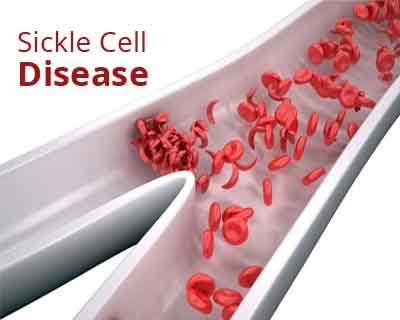- Home
- Editorial
- News
- Practice Guidelines
- Anesthesiology Guidelines
- Cancer Guidelines
- Cardiac Sciences Guidelines
- Critical Care Guidelines
- Dentistry Guidelines
- Dermatology Guidelines
- Diabetes and Endo Guidelines
- Diagnostics Guidelines
- ENT Guidelines
- Featured Practice Guidelines
- Gastroenterology Guidelines
- Geriatrics Guidelines
- Medicine Guidelines
- Nephrology Guidelines
- Neurosciences Guidelines
- Obs and Gynae Guidelines
- Ophthalmology Guidelines
- Orthopaedics Guidelines
- Paediatrics Guidelines
- Psychiatry Guidelines
- Pulmonology Guidelines
- Radiology Guidelines
- Surgery Guidelines
- Urology Guidelines
Researchers find biomarker for sickle cell disease

New York : An international team of researchers including one of Indian-origin, has found new biophysical markers that could help improve the understanding of treatments for sickle cell disease, an inherited blood disorder.
“There is a critical need for patient-specific biomarkers that can be used to assess the effectiveness of treatments for sickle cell disease,” said Subra Suresh, President of Carnegie Mellon University and co-author of the study.
In people afflicted by this condition, the red blood cells become hard and sticky and take on a flattened, sickled shape.
This change in shape and rigidity causes the red blood cells to be stuck in the blood vessels and prevents the transport of oxygen to the surrounding tissue. This can cause anaemia and extreme pain and impact the health of the body’s tissue and organs.
“This study shows how techniques commonly used in engineering and physics can help us to better understand how the red blood cells in people with sickle cell disease react to treatment, which could lead to improved diagnostics and therapies,” Suresh noted.
Currently, hydroxyurea is the only US Food and Drug Administration approved drug for sickle cell disease.
The drug reduces sickling in red blood cells and is used to treat pain and reduce the need for blood transfusions in some patients, but it does not work in all patients.
Researchers have been divided over what mechanisms cause the drug to work.
In the current study, the international research team evaluated the biophysical properties shape, surface area and volume and biomechanical properties flexibility and stickiness of red blood cells under normal oxygenated conditions using electromagnetic waves to measure small differences in physical properties.
The technique, known as common-path interferometric microscopy, allowed researchers to get a three-dimensional view of the cells.
“Our findings shine a light on the mechanism behind hydroxyurea action, which has long been debated in the scientific community,” co-author of the study Ming Dao from Massachusetts Institute of Technology said.
“It’s exciting to see that using the latest optical imaging tools, we can now confirm which one is the dominating mechanism. Understanding the key mechanism of action will allow us to explore novel and improved therapeutic approaches for sickle cell disease,” Dao noted.
The findings appeared in the online early edition of the Proceedings of the National Academy of Sciences (PNAS).

Disclaimer: This site is primarily intended for healthcare professionals. Any content/information on this website does not replace the advice of medical and/or health professionals and should not be construed as medical/diagnostic advice/endorsement or prescription. Use of this site is subject to our terms of use, privacy policy, advertisement policy. © 2020 Minerva Medical Treatment Pvt Ltd